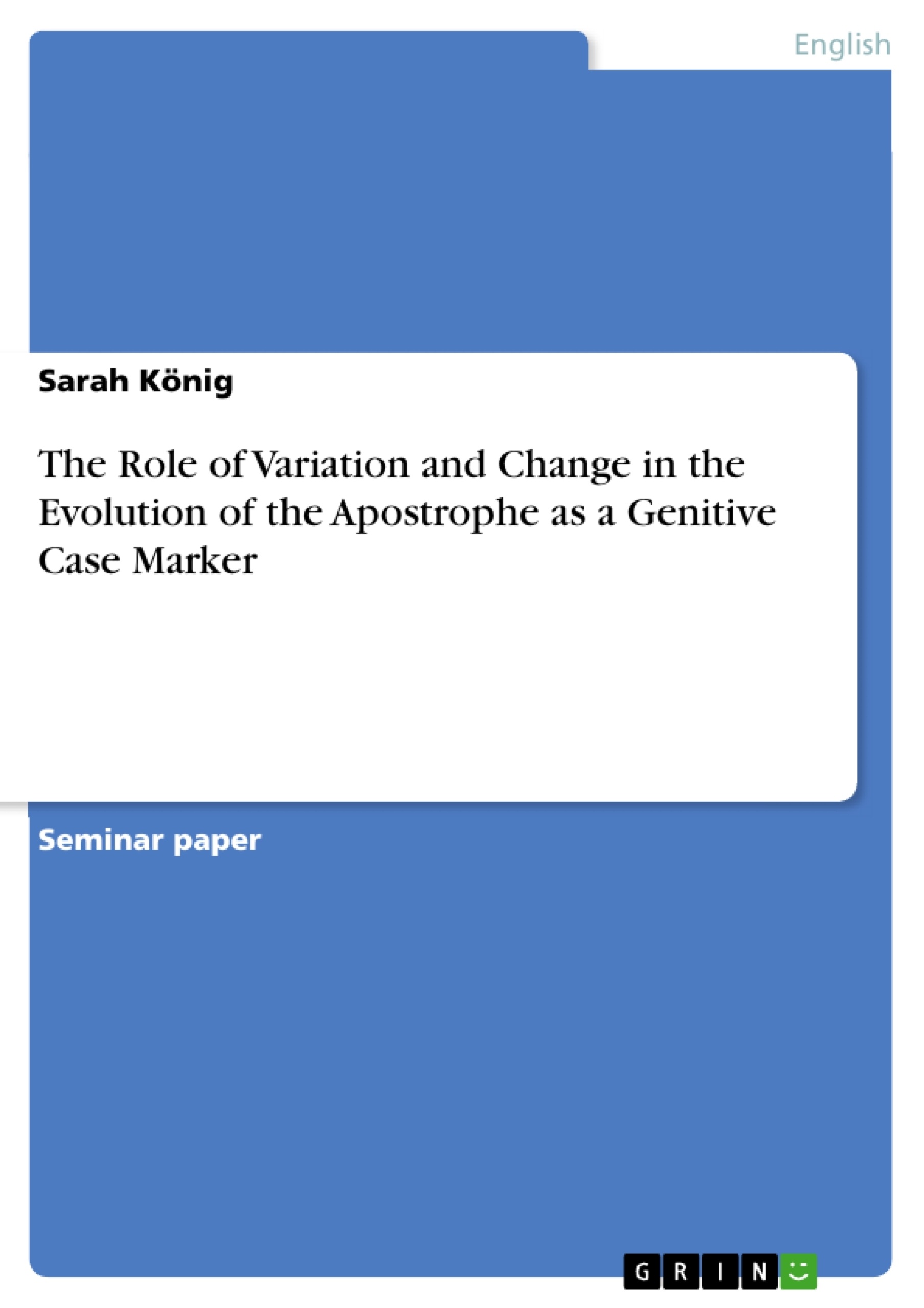This paper explores one of the pecularities of the English language: The use of the apostrophe as a genitive case marker. In tracing the historical development of genitive marking by means of the apostrophe, the contributing role of different variants and changes are discussed, namely the his-genitive and the development of phrasal genitive marking.
Additionally the evolution of various functions of the apostrophe is taken into account, thus attempting to answer the question of why the English language would come to adopt a diacritical sign as a method of genitive case marking. The main historical focus lies on Early Modern English as a pivotal time in this development. As the evolution of the apostrophe as a genitive marker was not concluded in this period, the paper assesses its development up to contemporary language use.
Table of Contents
1. Introduction
2. The Development of English Orthography and Punctuation: Origins of the Apostrophe.
3. Determining the Status of the Apostrophe and its Transition Period
4. Factors Influencing the Evolution of the Apostrophe in the Genitive
4.1. The Role of Proper nouns ending in -a or -o
4.2. The Role of the his-genitive.
4.3. The Development into a Phrase Marker
5. The Apostrophe as a Genitive Marker in the Plural
6. Conclusion: The future of the genitive apostrophe?
7. References
- Quote paper
- Sarah König (Author), 2014, The Role of Variation and Change in the Evolution of the Apostrophe as a Genitive Case Marker, Munich, GRIN Verlag, https://www.grin.com/document/314132
-

-

-

-
Upload your own papers! Earn money and win an iPhone X. -

-
Upload your own papers! Earn money and win an iPhone X. -

-
Upload your own papers! Earn money and win an iPhone X. -

-
Upload your own papers! Earn money and win an iPhone X. -

-
Upload your own papers! Earn money and win an iPhone X. -

-
Upload your own papers! Earn money and win an iPhone X. -

-
Upload your own papers! Earn money and win an iPhone X.

